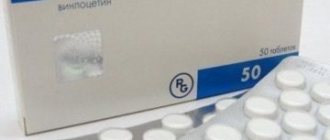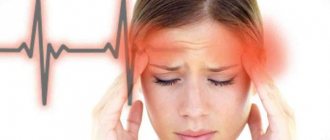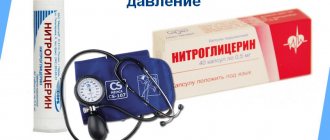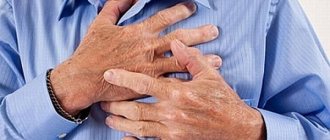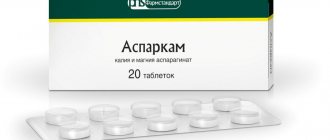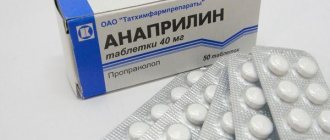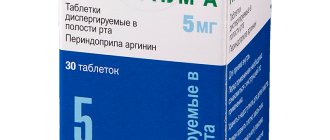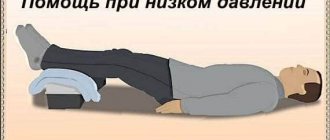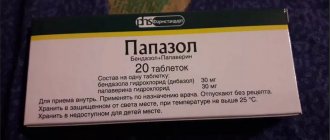Most home medicine cabinets will always contain Nitroglycerin tablets or solution, especially if family members have heart problems. At the same time, people rarely wonder why nitroglycerin is dangerous when used arbitrarily.
This drug is one of the most effective medications for relieving pain during an acute attack of angina. The pain goes away almost instantly, and the period of removal of nitroglycerin from the patient’s body takes no more than 40-50 minutes.
However, Nitroglycerin, the lethal dose of which is not so large, must be taken consciously, with knowledge of the pharmacological action.
The mechanism of action of Nitroglycerin on the patient, indications and contraindications for use
This substance was first introduced to the general public in the mid-19th century and was used mainly to make shells and bombs. Scientists started thinking about what would happen if you took Nitroglycerin much later.
The medicine is a vasodilator - substances that relax all the smooth muscles of the human body: from the coronary vessels to the gastrointestinal tract. In modern medicine, it is widely used to relieve angina pectoris, although nitroglycerin is not suitable for long-term treatment of this disease.
Taking the drug sharply reduces the oxygen demand of the heart muscle due to dilation of the peripheral veins and a decrease in blood flow to the right ventricle. In addition, the drug changes the direction of blood flow in the coronary vessels in favor of areas of severe myocardial ischemia.
Patients should be careful when taking medication for angina. This medicinal substance has quite a lot of contraindications, and if an overdose of nitroglycerin occurs, the consequences can be very dire.
Contraindications for taking this nitrate include:
- low blood pressure;
- the presence of acute myocardial infarction;
- pulmonary edema;
- inflammatory diseases of the myocardium.
Nitroglycerin is prohibited for use in case of stroke, glaucoma and a history of head trauma.
During pregnancy and lactation, the use of this drug is discussed in the medical community. It is believed that the risk of using a drug for angina pectoris should not exceed the risk of the pathological effect of this drug on the child’s body.
We recommend reading the article about what to take for heart pain. From it you will learn about the causes of pain, what to do, medications for pain in the heart area, indications and contraindications for use.
And here is more information about the pre-infarction state.
Contraindications
The use of the drug is contraindicated in the following cases:
- slowing the heart rate to 50 beats per minute;
- hemorrhagic stroke;
- heart failure with normal or low pulmonary artery pressure;
- recent history of brain injury;
- cerebrovascular accidents;
- chronic heart failure with low left ventricular filling pressure;
- individual intolerance to the components of the drug;
- use of phosphodiesterase inhibitors (Sildenafil);
- closed glaucoma;
- intracranial hypertension;
- severe anemia;
- subarachnoid hemorrhage;
- isolated mitral stenosis;
- idiopathic hypertrophic subaortic stenosis;
- cardiac tamponade, constrictive pericarditis, hypovolmia, toxic pulmonary edema, atherosclerosis (with intravenous administration);
- under 18 years of age;
- pregnancy and breastfeeding period.
Before use, you should check the expiration date of the medicine, since after 2 years the effect of the medicine may change significantly.
Nitroglycerin is also used with caution in the following cases:
- thyrotoxicosis;
- arterial hypotension with low systolic blood pressure;
- hypertrophic cardiomyopathy (HCM);
- severe form of renal failure;
- liver failure;
- increased peristalsis of the gastrointestinal tract and malabsorption syndrome (when using prolonged forms of the drug);
- cerebral atherosclerosis;
- tendency to orthostatic hypertension;
- diabetes mellitus;
- over 60 years of age.
Ignoring contraindications or independently changing the dosage of the drug can lead to serious consequences.
Side effects of Nitroglycerin and signs of poisoning with this drug
If the patient regularly takes Nitroglycerin during angina attacks, an overdose is not something exceptional. Chronic patients can safely take up to 3-4 tablets at a time, and the maximum daily dose of the drug is 6 tablets. Experts recommend not to risk your health in vain! If 3 tablets of the drug do not bring relief, the patient must seek specialized help in a medical institution.
The use of Nitroglycerin to relieve an attack of angina may cause the patient:
- headache;
- drop in blood pressure;
- feeling of a rush of blood to the upper half of the body;
- noise in ears;
- feeling of heat and slight chills.
Such manifestations of the action of the drug are possible if the recommended dose is slightly exceeded, and if a critical overdose of nitroglycerin occurs, death occurs as a result of acute respiratory failure.
Most often, young children and the elderly become victims of the drug. In the first case, the parents are to blame for leaving the medicine in an accessible place, and in the second, senile amnesia is to blame. In rare cases, nitroglycerin tablets are used for the purpose of suicide, however, such cases still occur.
The annotations for the drug do not clearly define what dose of nitroglycerin will be lethal. For each patient, the negative effect of taking it occurs individually. The cause of an overdose can also be the patient’s addiction to the medicine, caused by prolonged and unsystematic use. The usual doses of the drug no longer provide relief, and the patient unintentionally exceeds the lethal dose of the drug.
Watch the video about why Nitroglycerin may not save, but kill:
Consequences of an overdose of nitroglycerin
A large dose of the drug will not benefit the body; its reaction will be more pronounced.
- dry mouth
Blue lips, nails, and palms will appear.
- An overdose of nitroglycerin may cause dry mouth, nausea, and vomiting.
- Severe weakness, shortness of breath, dizziness up to loss of consciousness.
- Temperature may gradually increase, convulsions may occur, and intracranial pressure may increase.
- The dangerous consequences of an overdose of nitroglycerin are orthostatic collapse, in which, as a result of a sudden change in body position, the supply of blood to oxygen decreases and the person loses consciousness.
A fatal outcome after an overdose of nitroglycerin will occur within two minutes after consuming the drug at a dose of 210 mg/kg.
First aid for signs of Nitroglycerin poisoning
If the patient shows signs of nitroglycerin poisoning, he is placed on his back with his legs elevated. This will maintain blood flow in the most vulnerable organs of the human body - the heart and brain. It is necessary to rinse the victim’s stomach and give several tablets of activated carbon.
Before the ambulance arrives, you can try to relieve some of the symptoms of poisoning on your own:
- Validol will relieve symptoms of dizziness and chills;
- for severe nausea and vomiting, aspirin will help;
- if the patient has low blood pressure, it is allowed to offer him coffee or strong sweet tea.
It is not recommended to try to cope with this problem on your own, since the interaction of large doses of nitroglycerin with other medications can cause the opposite effect and worsen the patient's condition.
Of course, you should not use alcoholic drinks to raise blood pressure in such a condition. Nitroglycerin and alcohol are practically incompatible even in a healthy person, and in the event of a drug overdose, drinking alcohol can lead to the most disastrous results.
Composition and pharmacological properties
The active component of the drug is the substance of the same name, nitroglycerin. Its action is aimed at:
- saturation of the myocardium with oxygen;
- normalization of coronary blood flow;
- unloading of the myocardium.
The main indications for taking the medicine are the following conditions:
- relief/prevention of angina attacks;
- myocardial infarction;
- left ventricular failure;
- recovery after myocardial infarction;
- unstable angina;
- pulmonary edema.
The therapeutic effect of Nitroglycerin is observed 1-3 minutes after application. Reaches maximum concentration in the blood after 20-25 minutes. Excreted from the body by the kidneys and gastrointestinal tract.
Interaction of Nitroglycerin and alcohol, Viagra
If the patient takes nitrates to relieve angina for a long time, then the instinct of self-preservation gradually decreases, and the medicine no longer causes alertness. Some patients allow Nitroglycerin and alcohol to be used together to enhance the effect of the drug; the consequences of this experiment will be terrible in 100% of cases.
Ethyl alcohol and its derivatives have a similar effect to nitrates and enhance the human body’s response to their intake. A decrease in blood pressure with simultaneous consumption of alcohol and Nitroglycerin becomes catastrophic and leads to the development of a coma.
This mixture has a negative effect on the patient’s liver. Medicine for relieving angina pectoris dilates the vessels of the gastrointestinal tract, and any alcohols destroy the liver parenchyma. Due to the increase in the diameter of the hepatic vessels, alcohol enters the liver tissue in large quantities, which leads to the development of cirrhosis and liver failure.
If you take Nitroglycerin and alcohol at the same time, the lethal dose of both substances is significantly reduced. For the development of a lethal complication, 5-6 tablets of a cardiac drug may be sufficient if the relief of an angina attack was accompanied by alcohol consumption.
Many people don’t even know that Viagra was developed specifically to combat coronary heart disease. This medicine was widely used for hypertension, dilating peripheral vessels and lowering blood pressure. Currently, many famous cardiologists continue to use it for various coronary disorders.
It should be borne in mind that the main users of Viagra are men 50-60 years old. It is this group that uses Nitroglycerin regularly. It should be understood that the simultaneous use of both drugs can lead to the development of a critical drop in blood pressure, heart rhythm disturbances and complete cardiac arrest.
As experts advise, the break between taking Viagra and Nitroglycerin should be at least 48 hours. Only in this case the possibility of complications from the interaction of these drugs will decrease to normal clinical figures.
Nitroglycerin for blood pressure: increases or decreases
“Nitroglycerin” has a positive effect on blood vessels, eliminating spasms and stopping attacks of angina.
As a fast-acting medication, Nitroglycerin is prescribed for blood pressure - as a result of taking the drug, blood pressure decreases. Many other beneficial properties of this product on the human body have been established.
Let's consider how effective Nitroglycerin is in reducing blood pressure, and how the drug affects the patient's health.
The beneficial effect of “Nitroglycerin” is achieved due to the active component – glycerol trinitrate, which contains nitrogen. It binds with oxygen to form nitric oxide (NO).
This compound promotes smooth muscle relaxation by activating the production of guanylate cyclase.
This action is accompanied by relieving spasms, reducing the load on the heart, dilating blood vessels, improving blood flow and metabolic processes.
“Nitroglycerin” for high blood pressure helps lower it and has an effect on the body:
- increases the lumen of blood vessels;
- relieves pain in the chest and heart;
- helps eliminate spasm of smooth muscles of the gastrointestinal tract and coronary arteries.
“Nitroglycerin” is contraindicated for low blood pressure, since it achieves the opposite effect.
The substance is often used during attacks of angina pectoris to relieve pain in the chest area
Main types
The drug is quickly absorbed from the skin and surface of mucous membranes. The effect of Nitroglycerin is observed 1-2 minutes after it enters the bloodstream. However, the duration is just as short (up to an hour).
To increase the duration of action of the drug, long-acting agents are used. The active substance (trinitroglycerin) is enclosed in granules, which are then coated. Thanks to this, trinitroglycerin is not released immediately (after 15-20 minutes), but gradually, in parts, which allows you to extend the effect of the drug up to several hours.
Release forms
Nitroglycerin is produced in different forms:
- sublingual tablets (dosage 0.5 mg, 20, 40 pieces);
- capsules (the dosage is the same as the tablets, in addition to the main substance, it contains 1 mg of a 1% oil solution);
- 1% alcohol solution, used as drops (volume 5, 10 ml);
- sublingual spray (1 dose – 0.4 mg);
- concentrate for solution preparation and intravenous administration (1 mg/ml, ampoules volume 2, 5, 10 ml);
- extended-release tablets (coated);
- patch;
- ointment.
An excellent medicine that helps the heart muscle cope with excessive stress.
There are a number of diseases for which Nitroglycerin is prescribed. Its use can be either long-term or one-time. The main target of the drug is the cardiovascular system.
However, in addition to heart diseases, the drug is used for:
- biliary colic;
- acute pancreatitis;
- spastic colitis;
- intestinal dyskinesia;
- spasm of the arteries in the retina;
- pulmonary edema.
Indications for the use of Nitroglycerin for the heart
“Nitroglycerin” can relieve and prevent vascular spasms of the smooth muscles of the heart for a short time.
Prescribed in the treatment of cardiovascular diseases:
- angina pectoris, to relieve chest pain;
- heart failure;
- hypertensive crisis accompanied by heart pain;
- acute ischemic necrosis;
- neurosurgical operations to artificially lower blood pressure.
In addition, the drug can be used as a prophylaxis to reduce the risk of developing angina caused by stress or physical activity.
Nitroglycerin relieves not only heart pain, but also eliminates spasms of smooth muscles of the gastrointestinal tract
Does Nitroglycerin increase or decrease blood pressure?
The opinion that Nitroglycerin increases blood pressure is erroneous. However, its use has an impact on blood pressure levels. The relief of vascular spasm is accompanied by their expansion, which entails a decrease in pressure.
Lowering blood pressure is not the main property of the drug, but rather just a side effect. Nitroglycerin is used to prevent stroke, myocardial infarction, aortic aneurysm, and with high blood pressure (even in the absence of chest pain).
When using it, a short-term decrease in pressure may be observed, which will lead to weakness, dizziness, increased heart rate, and lightheadedness. Therefore, after taking the medicine it is better to rest.
This will help to temporarily reduce blood pressure and normalize the patient’s condition until medical attention is received.
To protect the body while taking the drug and maintain its effectiveness, you should follow some recommendations (rules):
You should not use Nitroglycerin for high blood pressure with the sole purpose of lowering blood pressure.
- Tablets or capsules should be placed under the tongue and wait until completely dissolved.
To reduce this time, the capsule can be bitten. If the condition does not improve within a few minutes, repeated use of the product is recommended. If there is no improvement, you should seek medical help. The next dose can be taken no earlier than half an hour later. This time is enough for the previously taken dose to be removed from the circulatory system. The maximum daily intake should not exceed 5-6 tablets.
- Either drop the alcohol solution directly under the tongue (2-4 drops), or apply the same amount onto a piece of sugar and place it under the tongue until completely dissolved. 16 drops is the maximum amount allowed per day.
- Spray the spray (1-2 doses) under the tongue in a sitting position.
Sit for a few seconds with your mouth closed, do not swallow. If necessary, the procedure can be repeated, but no more than 3 times in 15-20 minutes. - Dilute the intravenous solution in 5% glucose solution or 0.9% NaCl to obtain a concentration of 50, 100 mcg/ml. Administer by drop. If necessary, to achieve an effect, you can increase the dosage (every 5 minutes) or the rate of administration (up to 0.02-0.01 mg/min).
- Apply the patch to the skin for 12-14 hours. After removing the patch, take a break of 12 hours.
To relieve an acute attack of angina, you should take one of the forms of the drug:
Long-term use of Nitroglycerin can be addictive
- tablet – about.5 mg;
- alcohol solution – 2-3 drops;
- aerosol – 1-2 doses.
To prevent an attack of angina:
- tablets – 0.5 mg a couple of minutes before going outside or starting physical activity;
- spray – 1 dose, 5-10 minutes;
- use the patch on the chest area or upper arm (it is recommended to change the area the next time you apply the patch);
- ointment – apply a thin layer of 5-10 cm to the skin of the chest, abdomen, hands (repeat 2-3 times a day).
In case of myocardial necrosis, administer the drug intravenously (5% solution).
To eliminate pulmonary edema:
- aerosol – 4 doses;
- intravenously (1% solution).
For pancreatitis and hepatic colic, use 1 dose of the tablet form of the drug.
Contraindications and side effects
Contraindications for the use of Nitroglycerin are:
The medicine is not used for myocardial infarction, glaucoma, during pregnancy and breastfeeding
- Individual intolerance to drugs containing nitrates.
- Age (up to 18 years).
- Pregnancy, breastfeeding.
- Low pressure.
- Circulatory disorders.
- Concomitant use of phosphodiesterase inhibitors.
- Collapse.
- Impaired liver and kidney function.
- Pulmonary edema due to exposure to toxins.
- Heart disease.
- Angle-closure glaucoma.
- Epilepsy.
When using the drug "Nitroglycerin" side effects are possible:
- dizziness;
- headache;
- stomach pain;
- tachycardia at low pressure;
- diarrhea;
- nausea;
- feeling of anxiety;
- disorientation;
- feeling of heat;
- noise in ears;
- dry mouth;
- allergic reaction;
- cyanosis (blueness of the skin and mucous membranes).
The substance dilates blood vessels, which may cause the patient to experience a headache after taking it.
The drug must be stored in a cool, dark place (heat and light contribute to the rapid destruction of the active substance). When using, you should immediately close the jar; the container and cotton wool are treated with a special solution to preserve the activity of the product.
It is not recommended to use the drug after the expiration date. Most often it is 2 years. To obtain the greatest effectiveness, it is better to replace the old drug with a new package every 2-3 months.
Features of use
Nitroglycerin is a fairly common remedy. The medicine has a rapid effect and can short-term lower blood pressure.
Some rules for using Nitroglycerin for hypertension should be taken into account:
- It is necessary to use the drug to lower blood pressure while lying down or sitting (due to the rapid expansion of blood vessels, dizziness and lightheadedness may occur).
- To prevent addiction and reduce the effectiveness of the drug, it is necessary to take breaks from its use.
- While using Nitroglycerin, you must avoid drinking alcoholic beverages.
- Since the drug has a synergistic effect, if there is a prolonged lack of clarity of vision, as well as dry mouth, use should be suspended.
- The drug affects the ability to drive a car or operate machinery.
You can take Nitroglycerin only as prescribed by a doctor (if an accurate diagnosis has been established), who will prescribe the required form of the drug and its dosage.
Source: https://KrasotaStore.ru/lekarstva/nitroglicerin-ot-davlenija
What happens if a healthy person takes Nitroglycerin?
When a person with a healthy heart and blood vessels takes Nitroglycerin, only side effects of the drug appear:
- headache,
- dizziness,
- cardiopalmus,
- darkening in the eyes,
- nausea,
- hot flashes.
In case of accidental use, you should drink more water with lemon juice and tea. To increase pressure, it is recommended to lie in a horizontal position so that your legs are elevated. If several tablets are taken at once (from 5 pieces), then gastric lavage and calling an ambulance are required.
Nitroglycerin for high blood pressure: can it be taken to lower blood pressure
“Nitroglycerin” has a positive effect on blood vessels, eliminating spasms and stopping attacks of angina.
As a fast-acting medication, Nitroglycerin is prescribed for blood pressure - as a result of taking the drug, blood pressure decreases. Many other beneficial properties of this product on the human body have been established.
Let's consider how effective Nitroglycerin is in reducing blood pressure, and how the drug affects the patient's health.
How does Nitroglycerin work?
The beneficial effect of “Nitroglycerin” is achieved due to the active component – glycerol trinitrate, which contains nitrogen. It binds with oxygen to form nitric oxide (NO).
This compound promotes smooth muscle relaxation by activating the production of guanylate cyclase.
This action is accompanied by relieving spasms, reducing the load on the heart, dilating blood vessels, improving blood flow and metabolic processes.
“Nitroglycerin” for high blood pressure helps lower it and has an effect on the body:
- increases the lumen of blood vessels;
- relieves pain in the chest and heart;
- helps eliminate spasm of smooth muscles of the gastrointestinal tract and coronary arteries.
“Nitroglycerin” is contraindicated for low blood pressure, since it achieves the opposite effect.
The substance is often used during attacks of angina pectoris to relieve pain in the chest area
Myocardial infarction
Myocardial infarction is the most severe clinical form of coronary heart disease (CHD).
Myocardial infarction is characterized by necrosis (death) of a section of the heart muscle due to prolonged circulatory disturbance (ischemia) in the myocardium. Most often develops in the left ventricle.
The heart is a muscular sac and plays the role of a pump in the body, moving blood. Large coronary vessels deliver oxygen to the heart muscle. When a vessel is blocked by a thrombus, the blood supply to the myocardium stops, blood does not flow, as a result of which the area deprived of oxygen dies.
Within 30 minutes, the heart muscle is still viable, then the process of irreversible changes begins.
Depending on the size of the necrosis focus, large-focal and small-focal myocardial infarction are distinguished. A small focal infarction is characterized by the absence of a pathological Q wave (a characteristic diagnostic criterion determined on an electrocardiogram).
The following periods are distinguished by stages of development:
- prodromal (pre-infarction) – 0-8 days;
- acute – up to 2 hours from the onset of myocardial infarction;
- acute – 7-10 days;
- subacute – up to 4 weeks;
- scarring – 2-4 months or more.
Along the flow they distinguish:
- monocyclic - acute or classic course;
- atypical - another localization of pain (not behind the sternum, but for example, in the upper half of the abdomen);
- recurrent - the appearance of new foci of necrosis during periods when scarring in the primary foci has not yet completed (up to 2 months);
- protracted – healing processes in the focus of necrosis do not proceed intensively enough, slowly;
- repeated myocardial infarction – the appearance of new foci of necrosis 28 days after the previous infarction.
Causes
The main cause of myocardial infarction is atherosclerosis of the coronary arteries. A heart attack is also possible due to blood clotting disorders - coagulopathies. In addition, spasm of the coronary vessels can lead to the disease.
Predisposing factors for myocardial infarction:
- age (men over 45 years old, women over 55 years old);
- gender (myocardial infarction occurs 3-5 times more often in men than in women);
- sedentary lifestyle (hypodynamia);
- heredity;
- alcohol abuse;
- smoking, including passive smoking;
- obesity;
- arterial hypertension;
- diabetes;
- history of myocardial infarction;
- mental lability and instability to stress;
- poor nutrition (increased consumption of animal fats).
Symptoms of myocardial infarction
The main symptom of the disease is intense chest pain (anginal). The pain usually occurs at night or in the morning.
The intensity of the pain syndrome may vary. In some cases, the patient feels discomfort in the chest, a feeling of compression behind the sternum. The pain lasts 15 minutes or more, and is relieved only after a few hours with narcotic drugs.
Nitrates (nitroglycerin) are ineffective for myocardial infarction.
Painful sensations arise suddenly and are burning in nature (“dagger” pain or “stake in the chest”). In other cases, the pain syndrome is similar to an angina attack - the pain is pressing, as if grabbed by a hoop or squeezed in a vice.
The pain radiates into the left arm, causing tingling and numbness in the wrist and fingers. Irradiation to the neck, shoulder, lower jaw, and interscapular space is possible. Another characteristic of pain is its wavelike nature; it either decreases or intensifies.
Against the background of a painful attack, significant pallor of the skin and profuse cold sweat are noted. The patient feels a feeling of lack of air, the pulse quickens. In addition, there is a fear of death.
Source: https://pb17.ru/preparaty/nitroglicerin-ot-chego-pomogaet.html
Headache after Nitroglycerin
If you have a headache after Nitroglycerin, it is recommended to dissolve 1-2 tablets of Validol. In case of constant pain syndrome, it is necessary to take nitrates with prolonged release of the active substance (for example, Cardiket retard, Olicard retard) or drugs for angina of other groups. This helps reduce the dose of Nitroglycerin sufficient to relieve heart pain.
If the tablet becomes much better when dissolving, but part of it remains under the tongue, then it is recommended to spit out the rest.
Daily dose of nitroglycerin
In dosage forms, a 1% solution of nitroglycerin is used, which can be produced in the following versions:
- alcohol solution, which is in 5 ml bottles;
- sublingual tablets packaged in glass or plastic tubes;
- in oil, packaged in red capsules.
Any form affects the smooth muscles of blood vessels and is used in cardiology to relieve the symptoms of angina pectoris. The effectiveness of nitroglycerin makes this drug the main one for relieving pain attacks during angina pectoris.
A safe dose of nitroglycerin is no more than 6 tablets per day. Typically, people use this drug when emergency assistance is needed when pain of unknown origin appears in the chest area.
When it appears behind the sternum and passes into the left arm, you need to sit down and take a comfortable body position. Then you need to put a tablet of nitroglycerin and validol under your tongue, the action of which prevents headaches from appearing. If the attack of heart pain has not passed after half an hour, you can put another tablet under the tongue and, if the condition does not improve, call an ambulance. Doctors will do a cardiogram and take the necessary measures to relieve an attack of heart pain.
Patients with a confirmed diagnosis take modern medications based on long-acting nitroglycerin in the doses recommended by the cardiologist after the examination. If you follow your doctor's recommendations, you won't be able to get poisoned with nitroglycerin.
First aid
To help a victim of an overdose, it is necessary to understand how much of the drug and in what form entered the body. If a person spills drops or aerosol, then rinse the skin with plenty of water. If there are still tablets or capsules under the tongue, they must be removed. The victim must be laid down and his legs raised above the level of his head, and constantly ensure that there is sufficient access to oxygen.
Overdose victim needs medical attention
If symptoms of poisoning appear on the street, then passers-by should be asked not to crowd around the victim. If possible, rinse the stomach with warm water. While waiting for an ambulance, you can offer a viscous drink, some kind of jelly, or a cup of strong coffee. In case of severe dizziness and hot flash, place a validol tablet under the victim’s tongue. It is not recommended to give other medications to the victim.
Caution and careful attention to your condition must be observed when taking any medications, and nitroglycerin is no exception. You cannot start taking the drug on the advice of friends or acquaintances, and you cannot independently increase the doses prescribed by your doctor. If the usual dosage of the drug no longer stops angina attacks, then you need to contact a medical institution to prescribe another treatment; you should not expose yourself to the danger of an overdose.
Source: otravilsja.ru
Source: businessbmw.pp.ua
Results of nitrglycerin overdose
An overdose of nitroglycerin is extremely dangerous. The patient has:
- a sharp drop in blood pressure;
- loss of consciousness;
- signs of respiratory failure;
- nausea;
- vomit.
If such symptoms occur, you need to lower the head of the bed, provide access to oxygen, and administer the drug Phenylephrine and other vasoconstrictors to the patient.
It is recommended to carry out massive infusion therapy with saline solutions, dextrans, and use large doses of Prednisolone and Dexamethasone. A good effect can be obtained with intravenous administration of ascorbic acid and cardioprotectors.
